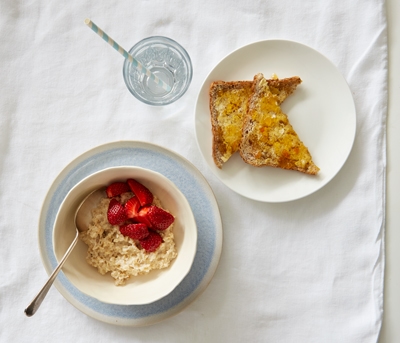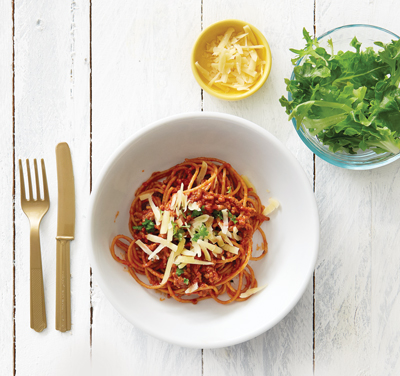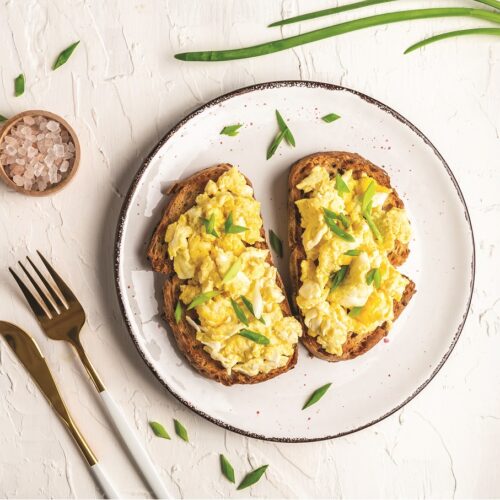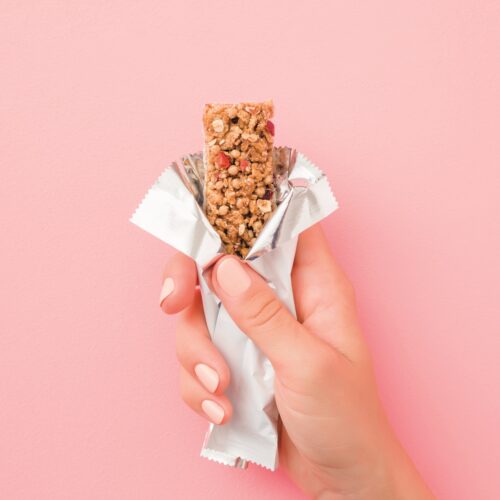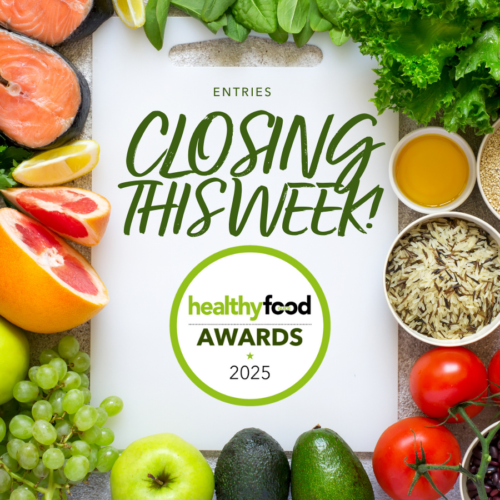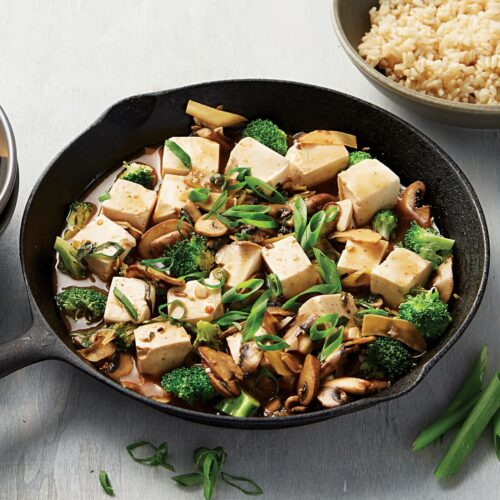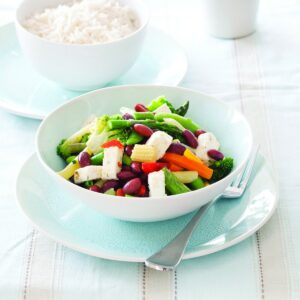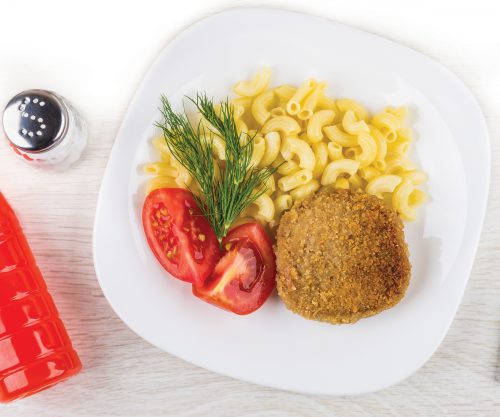
It’s easy for sodium to build up over a day. Dietitian Katrina Pace shows how to keep levels healthy for children.
We know too much salt can give adults high blood pressure. But these days, kids are also being diagnosed with high blood pressure and this can be linked to developing health problems later in life.
Reducing salt in our diet is one of the ways to prevent or reduce blood pressure and, in kids, this can have the same benefits as it does for adults. Making sure our children don’t eat too much salt as part of a healthy diet sets up good habits for life, and is a positive health change the whole family can benefit from.
How much salt?
As most of the salt in our diet comes from sodium chloride, we often talk about sodium and salt as the same thing.one gram of table salt contains about 390mg of sodium. It’s recommended children aged between one and three years old have no more than 1000mg sodium a day, and for four to eight-year-olds, it’s 1400mg. For nine to 13-year-olds, the recommended upper limit is 2000mg a day, which is also the amount recommended for adults as a target to limit the risk of developing health problems associated with high sodium intake. While 1400mg sodium, or 3.6g of salt (just under a teaspoon) sounds a lot, and like nothing we’d ever add at the table, most of kids’ salt intake comes from what is added to food during production.
Where do kids get their salt?
By far the most salt in kids’ food comes from bread and grain products (cakes, biscuits and cereals), processed red meats (corned beef, sausages, bacon, ham) and takeaway food.
Salt added at the table gives us 5-20 per cent of our daily salt intake. The 2002 National children’s Nutrition survey found 13 per cent of children usually added salt at the table, 35 per cent only sometimes and 52 per cent never added salt.
Cutting down the salt
The good news is manufacturers are gradually reducing the amount of salt added to food. Between 1987 and 2009, the salt content of white bread was reduced by 22 per cent. But a lot of kids still get far more salt than recommended. For some, it’s estimated at over 40 per cent more. Choosing lower sodium food and limiting the amount of high-salt food kids eat are two easy ways to help them establish healthy habits. It’s easier to make the changes now, in childhood, than after years of a high-salt diet when they’re adults.
Some of kids’ favourite food, such as marmite, ham and cheese, is high in salt. But cheese also gives kids calcium, which is needed for healthy bones. You can reduce the impact of the sodium in these items by separating them to different days, rather than all in the same lunch box, and making sure dinner is not too high in salt.
Salt affects the taste of our food. Too little and some kids will complain their food is bland, too much and they can’t eat it. Swapping directly to low-salt food may lead to dinners being left on the table, so make changes gradually over a few weeks. It’s worth taking a look at food labels, as some food is naturally low in sodium, while some contains only a little, without being specifically labelled ‘low sodium’.
What to look for on a label
- High-sodium food generally contains 600mg or more per 100g
- Moderate-sodium food contains around 120-600mg sodium per 100g
- low-sodium food has 120mg or less per 100g
- Even while using this guideline, we still need to think about how much of the food they’ll be eating.
Surprising places to find salt in kids’ Food
Watties Baked Beans and Sausages
895mg sodium per 210g serve (½ can)
Hellers Honey Baked Ham
401mg sodium per 33g serve (three slices)
Griffin’s Cookie Bear Stripes
340mg sodium per 25g serve (two griffin’s biscuits)
Shultz Mini Pretzels Snack Sack
300mg sodium per 28g bag
Le Snak Cheese Dip with Crispbread
206mg sodium per 22g pack
Bega Cheese Stringers
140mg sodium per 20g stick
Healtheries Potato Stix, Roast Potato
116mg sodium per 20g pack
Peckish Rice Crackers, Salt & Vinegar Multipack
71mg sodium per 20g bag
Mother Earth baked Oaty Slices, Chocolate Chip
70mg sodium per 40g slice
Here are some easy and healthy swaps to reduce the salt across the day.
Breakfast
Higher salt: 625 mg sodium
¾ cup cornflakes 150mg sodium
1 cup trim milk 100mg sodium
1 slice grainy bread 180mg sodium
1 teaspoon reduced-fat spread 20mg sodium
1 teaspoon marmite 175mg sodium
lower salt 525mg sodium
2 slices grainy bread 360mg sodium
chopped egg mixed with ½ tablespoon hummus 100mg carrot 25mg
low-fat fruit yoghurt 40mg sodium
kiwifruit negligible sodium
Lunch
Higher salt 993mg sodium
2 slices grainy bread 360mg sodium
30g (1 slice) premium ham 440mg sodium
1 teaspoon reduced-fat spread 20mg sodium
cheese (15g) 130mg sodium
low-fat fruit yoghurt 40mg sodium
kiwifruit negligible sodium
Lower salt 525mg sodium
2 slices grainy breas 360mg sodium
chopped egg mixed with 1/2 tablespoon hummus 100mg sodium
carrot 25mg sodium
low-fat fruit yoghurt 40mg sodium
kiwifruit negligible sodium
Snack
Higher salt 80 mg sodium
1 snack bag ready salted chips 80mg sodium
lower salt <1mgsodium
½ cup popcorn (homemade) negligible sodium
Dinner
Higher salt 780mg sodium
Spaghetti bolognese
100g beef mince 55mg sodium
½ cup chunky tomato pasta sauce 610mg sodium
2 tablespoons grated cheese 100mg sodium
75g spaghetti 15mg sodium
Lower salt 350mg sodium
Bolognese pasta bake
www.healthyfood.com



